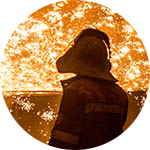8 Key Techniques to Boost Low-Temperature Impact Toughness of Ductile Iron
2025-08-07 15:06:11 hits:0
Studies have confirmed that in different temperature environments, variations in the matrix structure of ductile iron have a significant impact on its low-temperature impact toughness. Among them, ductile iron with higher ferrite content and better plasticity typically achieves more ideal low-temperature impact toughness indicators. The following details the core measures to improve the low-temperature impact toughness of ductile iron from multiple technical dimensions and verifies their technical accuracy.
I. Optimizing Chemical Composition Control
1. Reducing Harmful Element Content
Elements that promote or stabilize pearlite formation need to be strictly controlled, such as manganese (Mn), vanadium (V), zirconium (Zr), niobium (Nb), titanium (Ti), chromium (Cr), molybdenum (Mo), tungsten (W), copper (Cu), lead (Pb), antimony (Sb), etc. Two key elements require special attention:
2. Reasonably Regulating Ferrite-Forming Elements
The content of ferrite-forming elements such as carbon (C), silicon (Si), calcium (Ca), barium (Ba), aluminum (Al), and bismuth (Bi) should be appropriately increased, but the dosage balance must be maintained. Among them, the regulation of silicon (Si) is particularly critical:
Silicon is a strong graphitization-promoting element, which helps increase ferrite content, but excessive silicon will significantly reduce impact toughness. Data shows that for every 0.1% increase in silicon content, the ductile-brittle transition temperature rises by 5.5°C to 6°C. If the silicon content reaches around 4%, even if the ductile iron has a full ferrite matrix, it will be too brittle to withstand room-temperature impact loads. Therefore, for ductile iron requiring low-temperature impact performance, the silicon content is usually controlled between 1.6% and 2.0%.
II. Optimizing Casting Cooling Rate Control
For ductile iron with a specific composition, the cooling rate during the eutectic stage can significantly affect the matrix structure: the slower the cooling rate, the higher the ferrite content (the thicker the casting wall, the slower the cooling, and the higher the ferrite proportion). However, it is necessary to avoid coarse grains and graphite nodules caused by excessively slow cooling. Specific measures include:
III. Optimizing Heat Treatment Processes
Experimental data (as shown in Figures 4 and 5) indicates that heat treatment can effectively increase ferrite content, significantly improving elongation and impact toughness. Annealing promotes element diffusion at high temperatures, refines matrix lattices and grains, and stabilizes ferrite content and performance. In addition, heat treatment can appropriately relax strict requirements on some elements in raw and auxiliary materials; for small and medium-sized castings with substandard performance, defects can be compensated through heat treatment.
IV. Refining Grains and Increasing Eutectic Cell Count
There is a significant negative correlation between material grain size and fracture stress: when the grain size exceeds a critical value, brittle fracture is likely to occur. Grain refinement can reduce the ductile-brittle transition temperature, thereby improving low-temperature impact toughness. Core measures include:
1. Adopting Synthetic Cast Iron Melting Process
Using scrap steel and returned ductile iron as main raw materials, molten iron is smelted by carbon increasing with graphite and silicon increasing with ferrosilicon or silicon carbide. Since the melting points of carbon and silicon are higher than that of molten iron, they mainly enter the molten iron through diffusion and dissolution, forming a large number of [C] microcrystals. These microcrystals can serve as high-quality exogenous nucleation substrates for proeutectoid or eutectic graphite, effectively refining grains.
2. Implementing Multiple Inoculation Processes
The core of inoculation is to deoxidize, desulfurize, and form exogenous grains, thereby increasing graphite nucleation capacity, refining grains, and improving the number of graphite nodules and ferrite content. Practice has shown that after three inoculations (especially instantaneous inoculation with 0.3–1mm barium-containing inoculants during pouring), although the inoculant dosage is small, the effect is significant.
V. Purifying Molten Iron to Reduce Inclusions
Material fractures are mostly transgranular or intergranular. Inclusions inside grains or at grain boundaries weaken material bonding force, becoming crack sources or propagation paths under impact loads, reducing low-temperature impact resistance. Purification measures include:
1. Molten Iron Pretreatment
2. Strengthening Slag Removal and Filtration
VI. Controlling Harmful Element Segregation and Inclusion Formation
VII. Selecting Special Nodulizers and Inoculants
Nodulizers and inoculants for producing low-temperature impact-resistant ductile iron must follow three principles:
Stable Nodularization and Inoculation Effects:The deviation of nodulizer components (such as magnesium, rare earth, calcium, barium) must be ≤±0.3%. Meanwhile, ensure the stability of molten iron temperature, sulfur and oxygen content, and operating processes (such as tapping speed and position) to avoid slow tapping causing molten iron to directly impact the nodulizer.
Strong Graphitization Ability:Magnesium and rare earth are main nodularizing elements but tend to form chill. It is necessary to use magnesium as the main component, supplemented by rare earth, and matched with strong graphitizing elements such as calcium, barium, and bismuth.
Low Slag-Forming Ability:Reduce slag content in nodulizers and inoculants (such as magnesium oxide, rare earth oxides, etc.), and control calcium and barium contents (both have strong slag-forming ability).
VIII. Balancing the Contradiction in Nodularizing Element Dosage
There is a contradiction between the dosage of elements such as magnesium, rare earth, calcium, and barium in nodulizers and inoculants, and nodularization effect and low-temperature impact performance: excessive dosage will lead to high residual elements, increased oxide and sulfide slag, and reduced impact performance; insufficient dosage will affect nodularization effect and matrix structure. Therefore, it is necessary to accurately select special nodulizers, inoculants, and supporting processes according to molten iron quality, casting size, shape, wall thickness, and pouring time to achieve dosage balance.
Blog Author Profile
DAWN | Pig Iron & Castings Procurement Advisor 18 years in the foundry trenches give me an edge: I know how pig iron’s chemistry impacts casting quality and can troubleshoot defects like cracks and porosity. With a 1M MT/year pig iron and 60k MT/year casting output from our in-house factory, plus 200+ verified suppliers on our platform, we offer fast price comparisons. Expect a 24-hour inquiry response—my goal? Not just closing deals, but being your go-to partner in the foundry world.
18 years in the foundry trenches give me an edge: I know how pig iron’s chemistry impacts casting quality and can troubleshoot defects like cracks and porosity. With a 1M MT/year pig iron and 60k MT/year casting output from our in-house factory, plus 200+ verified suppliers on our platform, we offer fast price comparisons. Expect a 24-hour inquiry response—my goal? Not just closing deals, but being your go-to partner in the foundry world.

 en
en  fra
fra  de
de  ru
ru  ara
ara  gle
gle  it
it  jp
jp  kor
kor  th
th  zh
zh 


